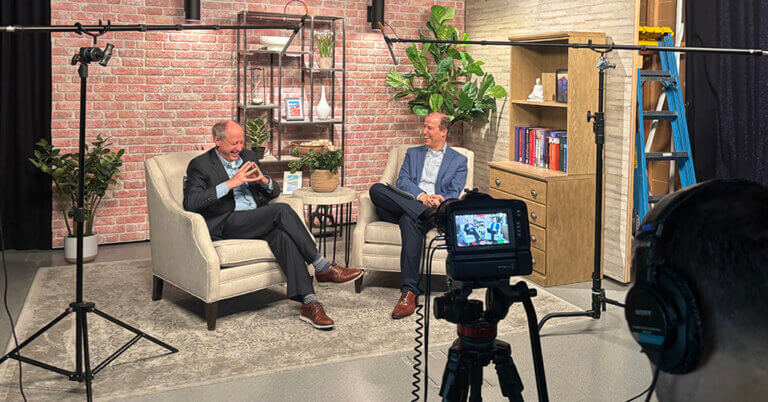June 17, 2025

Revenue Cycle Euphoria: Logical Automation and Consumerism
Author’s note: hfm magazine planned to publish this commentary in its entirety, and subsequently decided it would publish a revised and less-expansive version. Accordingly, 4sight Health is publishing the original article in its entirety below. This commentary is the final installment of a three-part series titled “Consumerism, Revenue Cycle and U.S. Healthcare.”
In April 1999, The Modern Library published its list of the top one hundred nonfiction books of the 20th century. Number one was “The Education of Henry Adams,” an intellectual autobiography written in 1905 by the great grandson and grandson of John Adams and John Quincy Adams, the second and sixth presidents of the United States. [1]
What captivates me about Henry Adams’ book is how he internalizes the rapid advances of science, technology and society during the second industrial revolution (late 1800s to early 1900s). Adams calls this period “the dynamo.” Always referring to himself in the third person, Adams concludes that his classical education lacked the scientific and mathematical knowledge necessary to understand and contextualize the dynamo.
To compensate, Adams educated himself about mind-bending technologies such as X-rays, the internal combustion engine, electrification and radio waves among others. He relied on reading, experiences and relationships to guide his education.
I confronted a similar conundrum in healthcare. Nothing in my academic training or decades-long career prepared me for the massive scale, intricacy and malleability of the revenue cycle management (RCM) industry within U.S. healthcare. Like Henry Adams, I engaged in a self-education quest. As a nod to Adams’ approach, here’s my third-person account of what I have learned.
The RCM Education of David W. Johnson
 When David W. Johnson published “The Customer Revolution in Healthcare” in 2019, he believed he thoroughly understood U.S. healthcare’s structure, power dynamics and operations. Perverse financial incentives had created an artificial, supply-driven economic model that optimized treatment volume, under-invested in preventive care, generated enormous waste and tolerated gaping disparities.
When David W. Johnson published “The Customer Revolution in Healthcare” in 2019, he believed he thoroughly understood U.S. healthcare’s structure, power dynamics and operations. Perverse financial incentives had created an artificial, supply-driven economic model that optimized treatment volume, under-invested in preventive care, generated enormous waste and tolerated gaping disparities.
Since 2019, a series of fortuitous circumstances and relationships brought Johnson face-to-face with the roiling underbelly of U.S. healthcare, the hot-potato mechanics of who pays how much to whom for which services. Four actors feature prominently in Johnson’s RCM “education.”
Nephew Derek. Like his uncle, Derek Johnson attended Colgate University, served in the Peace Corps, earned a Master’s degree in public policy and pursued a healthcare career. Deviating from his uncle’s path, he chose to work in RCM.
Through frequent conversations and spreadsheet presentations, Johnson’s nephew schooled his uncle in the mundane, day-to-day, labor-intensive approaches used to improve RCM outcomes. These interactions familiarized David Johnson with RCM’s unique vernacular, including terms such as front-end, back-end, prior authorization, coding and denials.
In a telling example, a box checked in error on 15,000-plus patient accounts required manual correction. At five minutes per account, Derek Johnson’s team spent over 1,250 hours fixing the problem. Delayed collection compounded total correction costs. David Johnson was to find that these types of clerical errors occur with alarming frequency.
hfma. In mid-2022, Johnson joined hfma’s Board. RCM constitutes hfma’s beating heart. The vast majority of its 135,000 members are RCM professionals. Hundreds of RCM companies exhibit at hfma conferences each year. As he acculturated at hfma, Johnson realized that healthcare RCM is as fragmented and convoluted as the system it funds.
Unlike commercial banking and other large industries, there are no comprehensive research reports on the RCM industry. Healthcare billing and collections operate underneath the market’s radar. Johnson came to envision hfma as potentially the marketplace’s most-trusted source for information on the RCM industry.
SparkChange Health. In early 2024, Johnson became the first external adviser to SparkChange, a Kansas City RCM automation company founded in 2019. Johnson learned that while most providers have digitized patient data, few have codified this data and even fewer have effective rules engines for automating claims processing. For these providers, RCM work queues become “over-routed” with too many human edits and breakage points.
Johnson engaged in weekly calls with SparkChange’s CEO Sal LoPorto with the initial goal of clearly understanding the company’s value proposition for clients. A breakthrough came when Johnson used the rudimentary triune brain model, which describes the three layers of the human brain, as a metaphor for RCM: [2]
- The brain stem, shared with reptiles, controls core bodily functions like breathing that keep creatures alive. Without the ability to issue bills and receive payment, providers would die.
- The middle brain, shared with mammals, controls motivations and emotions that drive behaviors necessary for survival (e.g., feeding, reproduction and parenting). For providers, highly developed and applied RCM behaviors enhance organizational vitality.
- The neocortex, unique to humans, enables speech, logic and other highest-order functions. For providers, using predictive analytics and other AI tools could optimize revenue collection, minimize friction and improve productivity.
Considering this metaphor, LoPorto emphasized that “middle brain” improvements generate the highest and most immediate financial returns. Indeed, pursuit of “neocortex” AI-driven improvements without having optimizing “middle-brain” operations is wasteful and counter-productive. With that, Johnson’s learning took another step forward.
Jeff Logan. Logan is an award-winning customer experience leader, and founder of the consumer-friendly RCM company Pelorus. He has described his over-20-year career being “focused on growing businesses in a human-centric way.”
Logan informed Johnson that two-thirds of health system touchpoints with consumers are non-clinical, related primarily to scheduling, billing and other administrative tasks. Consequently, improving end-users’ non-clinical experience builds customer loyalty, increases revenue collection and enhances organizational performance.
Kimberly Sullivan, SVP and chief revenue officer for Peace Health, emphasized consumerism’s importance during an interview with Johnson: Ensuring patients and families have simple, secure digital tools to manage administrative tasks helps remove barriers to care, allowing them to focus on their health and healing. That’s what gets Kim up in the morning.
These relationships and experiences gave Johnson a firm grip on RCM dynamics. His understanding went from being superficial to granular.
I hope my third-person exposition conveys my deep appreciation for the RCM education I have received during the last several years. That education has made me keenly aware of the essential dilemma confronting RCM operations in U.S. healthcare.
RCM’s Fundamental Dilemma
In his book “No Problem,” Alex Lowy describes three types of challenges: decisions, problems and dilemmas. Complexity and uncertainty increase as challenges move from decisions to problems to dilemmas. Lowy stresses the importance of understanding a challenge’s type before seeking to address it.
Decisions are straightforward. Solutions emerge from known options. Problems are more complex but always have solutions. Achieving desired outcomes requires research, opinion solicitation and barrier identification. Dilemmas have no solutions. Decision-makers navigate between competing forces to create incremental improvement.
RCM falls squarely into the dilemma category. As long as payers want to pay less and providers want to receive more, they will battle endlessly for relative advantage. Both payers and providers benefit from RCM’s complexity and lack of transparency. Each blames the other for payment dysfunction and consumer dissatisfaction.
No matter how powerful, AI tools cannot eliminate this inherent payer-provider conflict. Provider wins are incremental and never sufficient. Progress occurs through consistent “middle-brain” improvements. In football vernacular, success is three yards and a cloud of dust, not hail-Mary touchdown passes. Unlike football, however, the RCM game never ends.
Case Examples of Effective, Incremental RCM Performance Improvement
Two case examples involving SparkChange and Jeff Logan provide insight into how we might escape from the U.S. healthcare systems’ RCM dilemma. Neither is an eye-popping example of technological wizardry. Instead, each illustrates how logical automation and consumerism improve RCM performance despite the inherent payer-provider dilemma. This is the secret for RCM success.
1. Improving Flow Through Logical Automation
Centra Health is a large regional health system headquartered in Lynchburg, Virginia. Claims flowed like molasses through Centra’s RCM platform. Laboring with limited visibility to patient data and lacking actionable reports, it took Centra’s RCM team 20 days, on average, to submit claims to payers. Even more telling, Centra had not billed a patient for their portion of the bill in the previous 12 months.
Robert Boos, Centra Health’s vice president of revenue cycle, was beyond frustrated. He abhorred the thought of outsourcing his RCM operations to a third-party vendor because the “take our mess for less” strategy rarely generated the promised payoff. Still, he desperately needed Centra’s RCM operations to speed up claims processing and increase cash collections.
Boos engaged SparkChange to work with his team to improve Centra’s RCM performance. Acknowledging the importance of making incremental improvements, Centra and SparkChange employed “middle-brain” data intelligence and visibility tools with automation to discover and exploit actionable insights.
Over time, Centra realized reductions in claims processing to five days and 70% declines in payer denials, while annual cash collections increased by $200 million. An ecstatic Bob Booze crowed that “SparkChange help us light up the room.”
2. Improving Intelligence Through Consumerism
When Jeff Logan, founder of the RCM firm Pelorus was group vice president, patient and market experience, at Renton-Wash.-based Providence, his team would monitor consumer calls to solve problems and aggregate data for systemic improvement.
One day, dozens of calls came from Idaho patients unable to pay their bills. Their digital payment forms didn’t have an “Idaho” box to check. This was an easy problem to solve. Customers and the health system were happy. Unrecognized, this glitch could have continued for months, frustrating consumers and reducing cash collections.
Neither of these examples are eye-popping examples of technological wizardry. Instead, they illustrate how logical automation and consumerism improve RCM performance despite the inherent payer-provider dilemma. This is the secret for RCM success.
RCM Happiness is a Modest Thing
Journalists routinely ignored tennis champion Stefan Edberg, preferring to interview more colorful players like Boris Becker and Andre Agassi. Not seeking the limelight, Edberg observed in 1993 that he preferred to “just go out and do the business and play tennis.” He summed up his philosophy this way: [3]
My parents … taught me early that happiness is often a modest thing. It has nothing to do with money or fame.
Edberg’s wisdom applies. In healthcare RCM, success is a modest thing, and happiness comes from incremental cash-flow improvement.
Sources
- “The Adams family: The Education of Henry Adams,” Oct. The New York Times on the web, archived page, Oct. 27, 1918.
- ScienceDirect, “Triune brain,” page accessed May 15, 2025.
- Haylett, T., “Tennis: Wimbledon ’93/Forgotten Edberg ready to reveal his true identity: Swede prepares to emerge from the shadows as the women’s champion reaches another final,” Independent, July 1, 1993.





